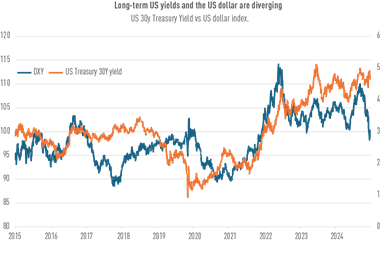On the basis that in every crisis there is opportunity, those with enough mettle to trust their judgement in the options markets will be finding plenty to consider right now. At the extremes we have seen, you could be forgiven for giving this idea a wide berth, but once the extremes have been rounded out, as they must eventually, a portfolio trading volatility is designed to provide diversification and is an approach well-suited to market turbulence.
The volatility funds work on the basis that volatility is an asset class in its own right. It is easily tradeable, through the listed options markets and, at times such as this, traders have an ability to profit from major anomalies in the market. By buying or selling options to hedge equity and interest rate risk, it is possible to extract the implied volatility component of an option.
The funds marketed by Credit Agricole Asset Management, for example, apply a mix of active and quant strategies to tap into the swings in volatility. This approach has the added advantage of being negatively correlated with equities. Alex Drabowicz, volatility product specialist at Credit Agricole Asset Management (CAAM) in Paris, explains that CAAM bases the strategy for its Volatility World Equities fund on an exposure grid which provides the managers with three drivers of performance. The first driver tracks one year implied volatility, determining exposure on the basis of mean reversion.
The fund will go long or short, with modest leverage, according to the current conditions, for one year implied volatility traced back to the beginning of the decade.
“We know that when the market falls, risk is the market increases and investor’s view of the future worsens. So we use implied volatility as an indicator of what volatility is expected to be in the future.” Fund managers have a plus or minus 0.5 discretion in the exposure grid at any time.
The second driver takes into account short- term variations in volatility. The vega (volatility exposure) is not constant but changes in line with the grid and the 0.5 leeway given to the manager. Moves in the level of volatility provide performance as the managers buy volatility when it’s down and sell it when it’s up. So, the more often volatility fluctuates up and down, the more often the fund can earn returns from this second performance engine.
The third driver is geographical allocation. The fund’s target allocation is 50% S&P 500, 30% DJ Eurostoxx 50 and 20% Nikkei 225, although this can be extended to include other indices such as Nasdaq, Hang Seng or Kospi depending on the market opportunities and manager’s convictions. Drabowicz says, “The fund doesn’t have a strict allocation to index volatility. We could have developed a fund with a global approach based on MSCI, but we thought we needed the fund to be dynamic, so we opted for strategic allocations according to market volatility.”
The allocation is based on the historical trend of relative volatility levels, market dynamics and the manager’s convictions. Drabowicz explains, “When one year implied volatility moves above 30%, that is when the fund will short volatility. However there is a lot of leeway left for the fund manager, so this is not 100% systematic.
“We have a global view. Once we know what the overall exposure of the fund is to volatility, we will know, for example, that we have to be long +2 in each area. “Often the three market volatilities run together - therefore we will stay at the 50/30/20 allocation level. In the last quarter of 2005, volatility on the Nikkei ran to 20%, while the US and Europe went down to 14%. For us, as managers of volatility, we have a tactical opportunity. We’d rather take part in the Nikkei rally and recalculate the long volatility to the US and Europe. In the last quarter of 2005, the Nikkei went up 28%. But normally, volatility is negatively correlated, so if the stock market goes up, volatility goes down. This was an unusual event. It’s usually a bad sign - one of them is wrong. We don’t take a macro view. We see a divergence and we see we should allocate away. It’s important to be active with this strategy.”
In the period from September through November 2008, the fund remained long
volatility all the way up to 30%, so the fund was positively correlated. However, it went short volatility in early October and what followed was a challenging period for the fund, because volatility had moved substantially away and up from its historical averages. One year implied volatility in the European market is up to 47% at the time of writing. That is compared to the previous high during the tech bubble of 30%. So the fund experienced some negative return during this period.
What can the managers do within the fund to deal with this? Drabowicz explains, “It’s important to manage short volatility as closely as possible. The fund managers are in control and have leeway to apply their skills. We recommend our institutional investors maintain a horizon of three years. So for us today it’s all about preserving capital. We believe strongly in the mean reversion process, and we believe our approach is different because we chosen one year implied volatility.”
The response of a few investors is that they were not comfortable being short volatility, so they redeemed. Credit Agricole offers daily liquidity on the fund and because it is using liquid listed options, it has limited counter-party risk. Most investors are sticking with the short position because they understand that it cannot remain this way. Implied volatility of 47% suggests a 3% movement every day for a year. It’s unlikely, but what if it were true?
Drabowicz says, “It would bring into question investors’ faith in equities. Is it possible? I don’t think investors could afford for that to happen. But we are being challenged with the hypothesis. The question investors need to ask is, is it worth being long volatility, unless you think things can only get worse than they are today.”




























No comments yet